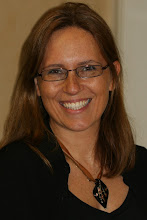
Chapter 5, written by Charles K. Kinzer takes a look at the way new literacies have redefined what we call "communities". Thanks to technology, students no longer think of a community as a small town, or part of a town where similar people live and work. I remember covering "Communities" in school and we looked at towns, our own and others; the school community; and a community in Africa. Today, children think of communities more globally. There are connections with others through the Internet that creates new communities. We are a community of bloggers...we share similar interests (maybe) and enjoy using technology as a means to communicate our thoughts and opinions. Technology offers this sense of community in education also. As Kinzer puts it, "When projects such as the Earth Day Groceries Project begin to bring together children and teachers fro around the world, a new form of community is being built - one based on common interests and goals, one that transcends the specific geographic space in which schools are physically located, compressing distance as never before." (p67)
I viewed schools as very isolationist in nature. By that I mean they taught me a set of predetermined information that had very little to do with my community, interests or life. We did not do projects that involved getting to know other people from another town, never mind another country. I could explain in detail the impact of Jethro Tull's "Horse Hoeing Husbandry" ( British Industrial revolution) but I did not know much about other communities in my area. I love the way children are now exposed to so much. They gain a much better understanding of other types of communities because they are able to interact with them (KeyPals) and research locations on the Internet.
The technology skills the children are now using carry them into the business community prepared and able to become useful members of society. Students need to understand the global community, how to use technology and how communication in a number of forms is vital in today's world. ">Internet Project Registry offers exciting collaborative projects that are suitable even for very young children. Beginning at such a young age, along with immersion into the skills and language involved in technology, students find completing these projects as ‘normal’ as any other type of schoolwork they do. Another great site is GlobalSchoolNet.org.
I see a wider school community opening up as parents and teachers can communicate so easily through emails, websites and blogs. I love posting my homework on my class website because it gives parents the chance to see what is going on without having to be ‘on the backs’ of their children. I send my newsletters out via email as well as on paper as many parents enjoy being able to check them out at work rather than when they come home late at night. It also prevents the problem of ‘lost’ newsletters. I know parents will get my messages. Sharing student work with parents is no longer confined to conferences and the random sending home of papers. Electronic portfolios can allow parents, students and other teachers to see the progress the children are making.
I long for the day a SmartBoard is installed into my room. The New York school that Kinzer talks about sounds like my dream: total access to technology through wireless laptops for every child!!!! Thus, in this setting the technology becomes incorporated into the learning, it is not an 'add-on' that is used 'if' one can gain access to it. Children in this setting are learning how to use technology because they are 'using technology'.
In order for a child to create a PowerPoint on a given subject, a plethora of literacy skills are put into play. Mina, a child at the school was able to express herself through the technology. She fully understood the correct techniques for researching information on the Internet. She could cut and paste, edit and revise, produce audio/visual including video, cite and produce her own work (obviously aware of the legal issues behind plagiarism). Mina also understood how to communicate for the intended audience, she selected the right terminology when explaining how she did things…she used all forms of literacy well…it was just in the context of technology rather than a novel or textbook, for example. Metacognition was evident as Mina expressed an understanding of her learning and understanding. We all hope children achieve such high standards of literacy. This example highlights the power technology has, if used correctly, to develop literacy. I want to avoid calling it ‘new literacy’ now as Mina obviously felt there was nothing ‘new’ in it at all.
Image: http://eduscapes.com/sessions/sand/web.jpg

No comments:
Post a Comment